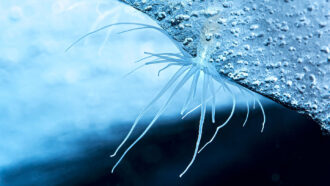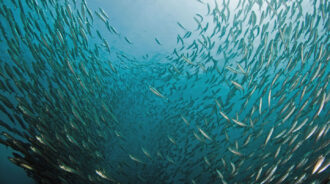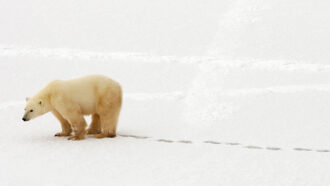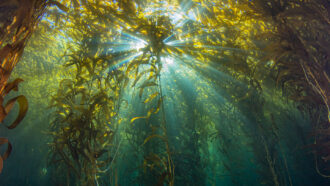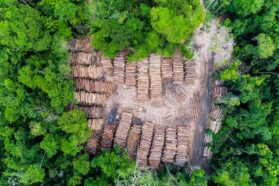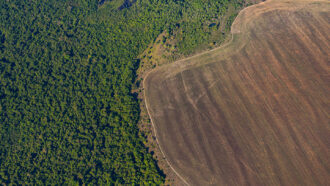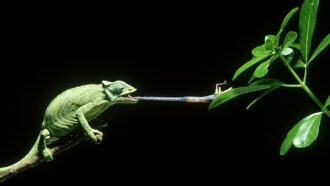Underwater jungles
Cold-water-loving kelp forests may be surprisingly abundant in the tropics.
By Emily Sohn
Thick forests of brown algae, called kelp, cling to the seafloor in cold waters throughout the world. There are about 100 kinds, including giant kelp, which stretch as high as 30 meters (100 feet). Kelp forests support a diversity of creatures, including fish, otters, crabs, and urchins.
Scientists have known that scattered bits of kelp grow in the warm tropics in places where cold water wells up from below. Now, an international team of researchers has used worldwide ocean studies to predict and find tropical locations where whole forests of kelp grow.
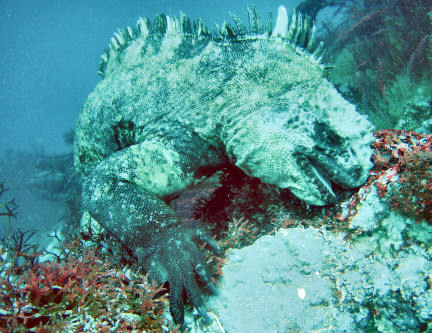 |
|
Thick forests of kelp support lots of marine creatures and lure visitors like this Galápagos iguana.
|
| S. Connell |
The team recently found kelp forests in deep waters off the Galápagos Islands, about 600 miles west of Ecuador in the Pacific Ocean.
What’s more, a new computer model predicts that there may be many more of these rich ecosystems in tropical waters around the globe. The model has identified 23,500 square kilometers (9,075 square miles) of tropical ocean hideouts where kelp might be growing.
Kelp lives in chilly places because there’s extra nitrogen available in cold water that seeps up from ocean’s bottom. Nitrogen is an essential nutrient for the algae. Kelp also needs sunlight to grow.
Michael Graham of Moss Landing (Calif.) Marine Laboratories and colleagues used recently compiled data about the oceans to look for spots that might meet these conditions. Their model predicted that kelp would grow in all the tropical spots where it had previously been collected.
But the team’s model also predicted that kelp would be found in an area of the Philippines that almost nobody knew about. The area was mentioned in an old paper—written in Russian—that reported a few kelp specimens in that part of the Philippines. One scientist involved in the new study knew about that spot, but he kept the knowledge secret until after the model had predicted it.
In the Galápagos, Graham and colleagues also explored places where the model had predicted kelp forests might grow. The expedition had a rocky start.
The first robotic, remotely operated vehicle (ROV) that went underwater came off the line that connected it to the surface. The second ROV, which went down to look for the first one, had an electrical malfunction and lost its ability to “see”.
So, the scientists had to explore by scuba diving instead. During their first dive, they hit the jackpot. Graham reports that, “I went down, cleared my mask, and there was kelp right in front of me.”
They found abundant kelp in eight places around the Galápagos.
Along with other work, researchers say, the new study points out how much they still have to learn about ecosystems that live in the ocean’s depths.—Emily Sohn
Going Deeper:
Milius, Susan. 2007. Jungle down there: What’s a kelp forest doing in the tropics? Science News 172(Sept. 29):196. Available at http://www.sciencenews.org/articles/20070929/fob3.asp .
Sohn, Emily. 2006. Coral gardens. Science News for Kids (March 1). Available at http://www.sciencenewsforkids.org/articles/20060301/Feature1.asp .
______. 2005. Fishing for giant squid. Science News for Kids (Nov. 2). Available at http://www.sciencenewsforkids.org/articles/20051102/Feature1.asp .
______. 2004. Explorer of the extreme deep. Science News for Kids (Nov. 10). Available at http://www.sciencenewsforkids.org/articles/20041110/Feature1.asp .

